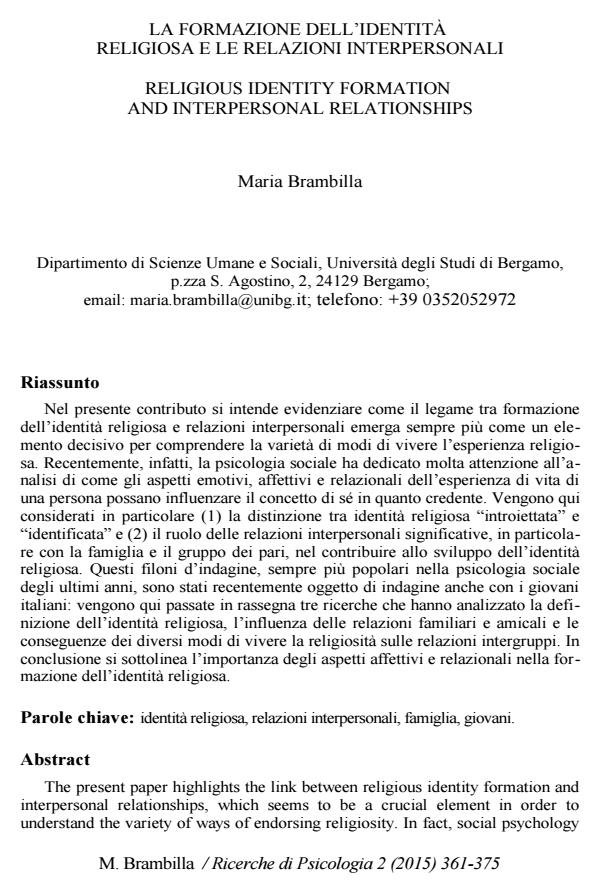Religious identity formation and interpersonal relationships
Journal title RICERCHE DI PSICOLOGIA
Author/s Maria Brambilla
Publishing Year 2015 Issue 2015/2
Language Italian Pages 15 P. 361-375 File size 229 KB
DOI 10.3280/RIP2015-002006
DOI is like a bar code for intellectual property: to have more infomation
click here
Below, you can see the article first page
If you want to buy this article in PDF format, you can do it, following the instructions to buy download credits

FrancoAngeli is member of Publishers International Linking Association, Inc (PILA), a not-for-profit association which run the CrossRef service enabling links to and from online scholarly content.
The present paper highlights the link between religious identity formation and interpersonal relationships, which seems to be a crucial element in order to understand the variety of ways of endorsing religiosity. In fact, social psychology recently devoted more and more attention to the emotional and relational aspects of everyone’s life experience which can affect the concept of oneself as a religious person. Here we consider in particular (1) the distinction between an "introjected" and an "identified" religious identity and (2) the role of interpersonal relationships, in particular with the family and the peer group, in contributing to the development of religious identity. These lines of investigation, increasingly popular in social psychology during the last decade, have been recently investigated also with Italian youths: three studies are reviewed that have analyzed the definition of religious identity, the influence of family and group relationships and the consequences of different ways of endorsing religion on intergroup relationships. In conclusion, we emphasize the importance of the emotional and relational aspects in the formation of religious identity .
Keywords: Religious identity, interpersonal relationships, family, youth
Maria Brambilla, La formazione dell’identita religiosa e le relazioni interpersonali in "RICERCHE DI PSICOLOGIA " 2/2015, pp 361-375, DOI: 10.3280/RIP2015-002006